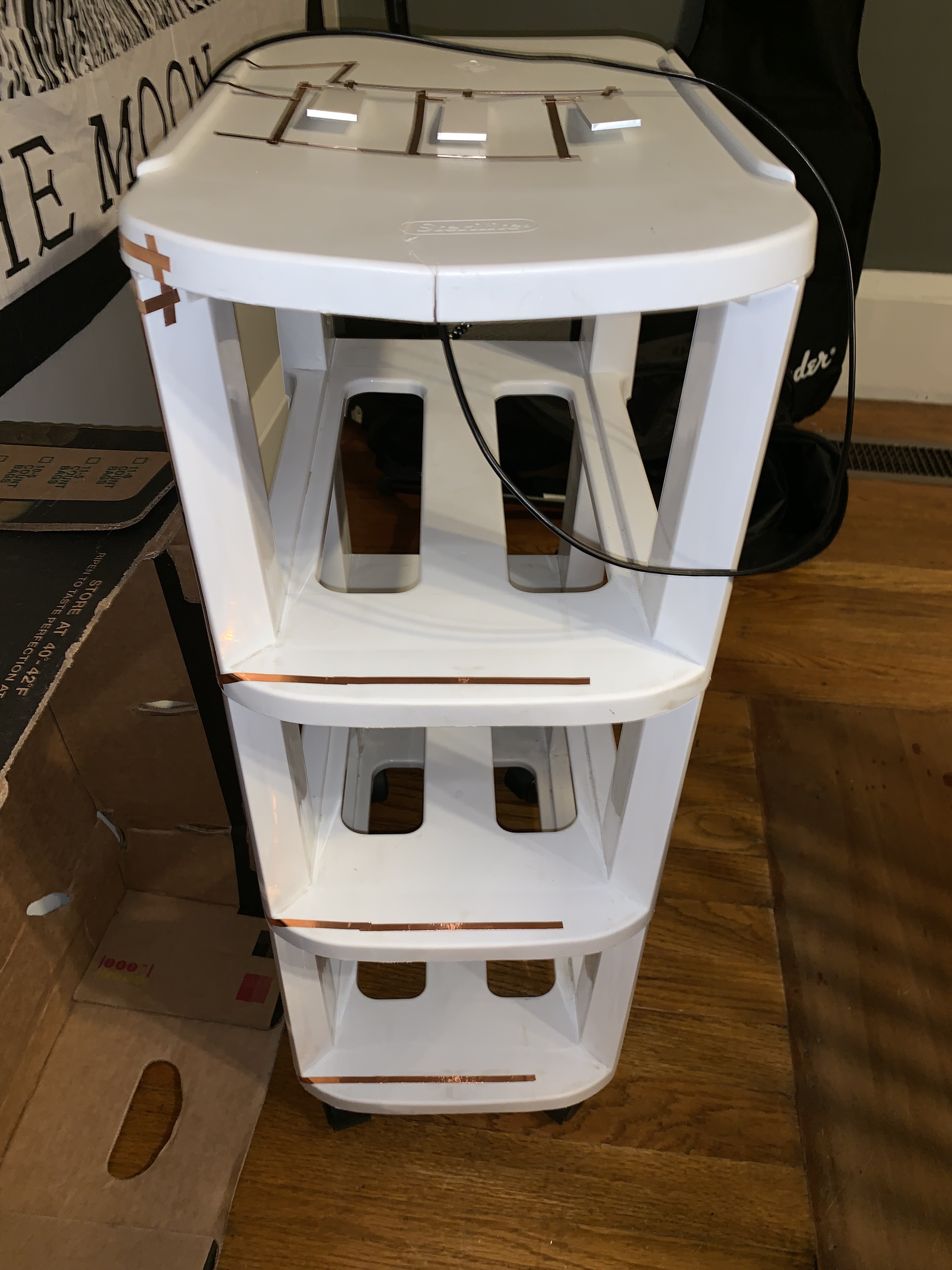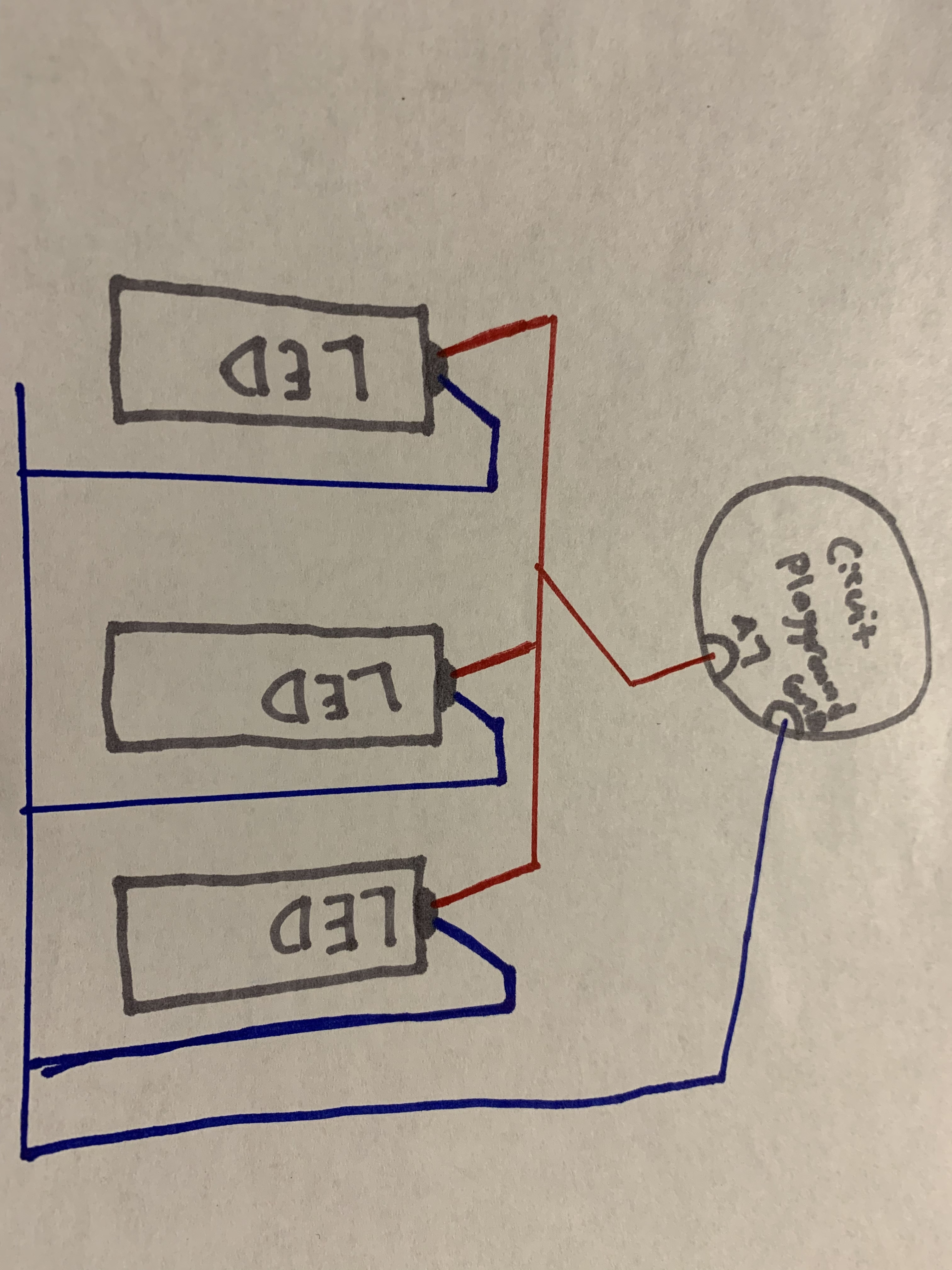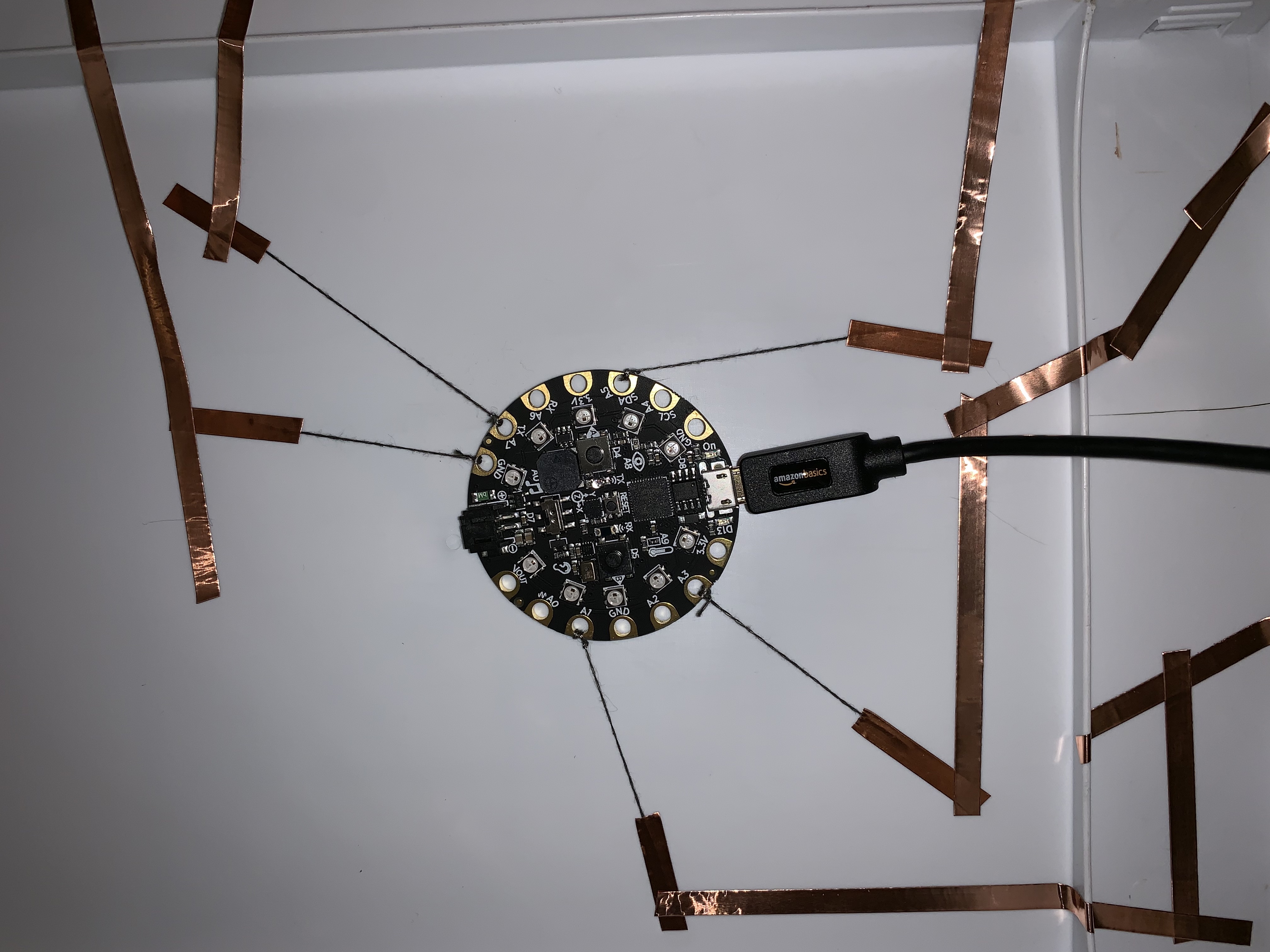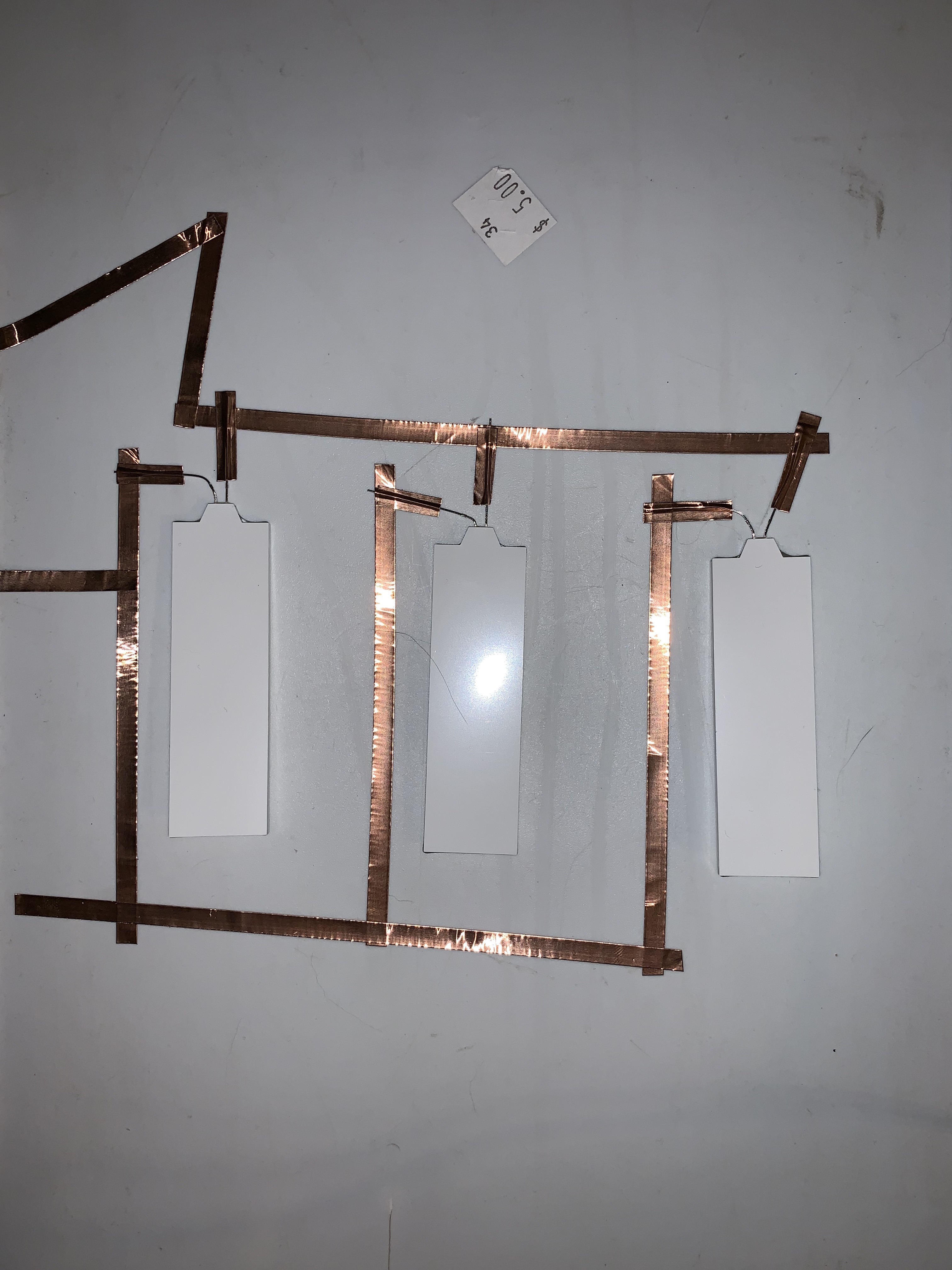Touch Lighting Anywhere

In this guide you will learn how to create your own lighting system, complete with three brightness settings and touch to turn on interactions.
First of all, materials. Here is a list of what you'll need.
Copper Conductive Tape
https://www.uline.com/Product/Detail/S-14676/3M-Si...
Conductive Thread
https://www.adafruit.com/product/640?gclid=Cj0KCQj...
The Circuit Playground Express
https://www.adafruit.com/product/3333
LED Backlight modules (or other compatible lights)
Know Your Circuits

It is important that you understand the circuit that will be necessary to make your off-board lights work in this project.
With this step I have included a simple drawing of how your lights should be connected. In the photograph, seen is the circuit Playground, the lights, And the circuitry that will be necessary as represented by blue for negative, and red for positive.
It is important to note that your lights MUST be connected using the A7 pin for the positive connection, and your negative connections can all run back to one or multiple GND pins.
Preparing Your Circuit Playground

Because of how finicky the circuit playground is with connecting directly to copper tape, it is imperative that you use a small amount on conductive thread to create your first connections to your circuit playground, then connect the thread to your copper tape.
Included in this step is a couple photographs showing how the circuit playground should look with the conductive thread attached to it, and the copper tape then connected to the thread.
To connect the copper thread to the circuit playground, I used a double loop through each pin, followed by a double knot tied as close to the circuitboard as possible.
Note: again it is important that you use the exact pins in the photograph, since the code provided in this tutorial requires these pins be used. These pins are the A1, A3, A5, A7, and GND pins.
After you have prepared your Circuit Playground, mount it where you would like your main source of light to come from, with the lights facing the direction you would like to illuminate.
Adding Touch Sensors
The cool thing about the Circuit playground is that it can sense the touch of any conductive materials connected to many of its pins. Plus, you don't need to create a full circuit to do this. What this means to creators is that all you need to do is run a line of the copper tape to the location where you would like to be able to touch to interact with your lights.
Our A1, A3, and A5 pins will act as our touch reading pins, so these conductive thread that you tied to these pins will have to connect to your copper tape, then you can run a line of copper tape to wherever you'd like your sensors to be.
In the photograph provided is my example of touch sensors, with each of the shelves sensors being connected to a different pin on the Circuit Playground.
For an example of how the touch sensors look, see the intro photo.
Installing Lights

In this step, it is important that you follow the diagram found in step one. While your circuit will probably not look like the one provided, it is still important that you use the same parallel circuitry, or else the copper thread will not carry enough current to make all of your lights work.
Run your positive line from your A7 Pin thread to the rest of your lights positive ends in parallel, and then run the negative ends of the lights back to the GND pin thread.
Shown in the photograph is a real life example of Parallel wiring.
Installing Software
Attached will be a file that can be uploaded onto your circuit playground. all you need to do is-
-download the file.
-plug in your circuit playground to your computer.
-drag and drop the file provided onto your CPBOOT which should appear on your desktop.
Now the software should be on your Circuit Playground!
In the code there are three blocks, each of which are almost identical, with the only difference being the pin that activates them and the brightness of the ob-board lights.
The A1 pin will give the user the lowest light setting, then the A3 pin, followed by the A5 pin providing the most light.
Downloads
Important Things to Know
There are a few common issues while using the materials at hand for this project, here is a list of some common problems and how to solve them.
1. If you try to connect your copper tape to your Circuit Playground, it will not work. You must remember to go from Circuit playground to your thread, then to your copper tape, as seen in the photos.
2. Make sure none of your conductive materials are touching each other unless they are supposed to be. Crossovers can cause false detection on sensors, or other issues.
3. Pressing multiple sensors will cause the Circuit Playground to act up, but this should resolve itself given enough time.